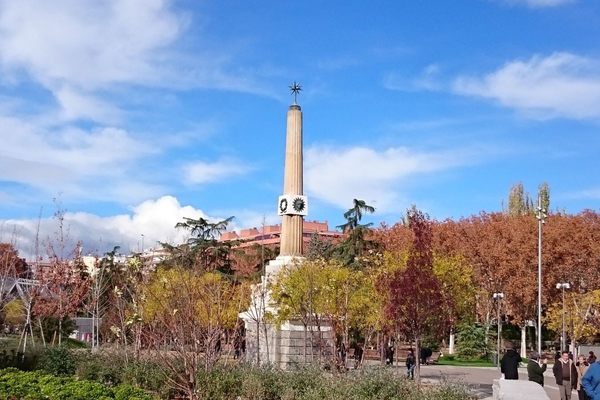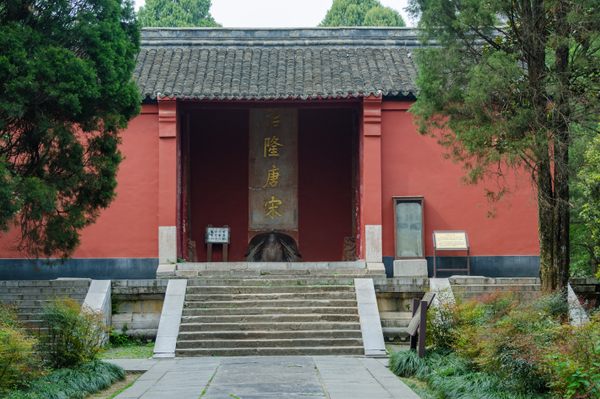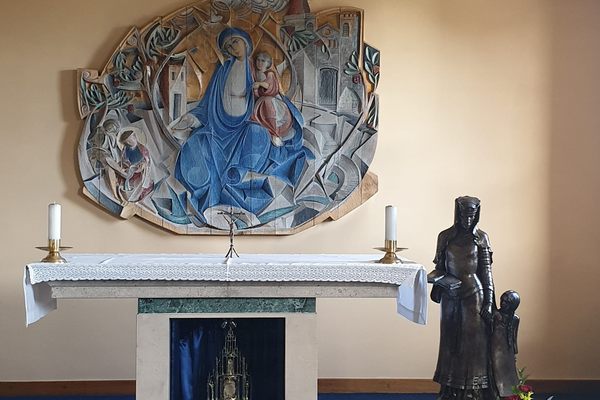About
The Mendozas were one of the most powerful families during the rule of Spanish King Philip II. One figure that stood out amongst the family was Ana Hurtado de Mendoza de la Cerda, Princess of Mélito and Duchess of Pastrana, most commonly known as Princess of Éboli. At just 13, she married Portuguese noble Ruy Gómez de Silva, a favorite of the king. She was perhaps one of the more popular noble figures of the time.
After his death, it's believed Ana became romantically involved with the secretary to the king, Antonio Perez. When the king discovered their relationship, Ana fell out of favor and was imprisoned for betraying state secrets. She was first held in the tower of Pinto near Madrid, then later in the Ducal Palace in Pastrana.
She begged the king, whom she considered her “cousin", for a pardon, but the king simply mocked her. From the latticed balcony that overlooks the Plaza de la Hora (An Hour Square), she was allowed to lean outside for one hour a day.
In 1569 the temple became a collegiate church, and a large Gothic-style headboard was built, while retaining the naves of what is now the choir without being altered.
After 10 years of captivity, Ana died in 1592. Her younger son, Bishop Pedro González de Mendoza crafted the crypt under the Collegiate Church to house the mortal remains of his parents and other family members.
The crypt dates back to 1637 and follows the model of another crypt belonging to the Mendoza family in Guadalajara, which in turn was inspired by the Pantheon of the Kings of El Escorial. Every sarcophagus, whether composed of marble, jasper, or limestone, is small in size, making it impossible to fit a corpse inside.
Under the floor of the crypt, past the slabs and iron rings, is the “Pudridero” or “rotting room”. There, bodies were left to decompose until their remains could fit into the crypt.
Related Tags
Know Before You Go
From Madrid, the church is a 59 mile (95 kilometers) trip by National Road 3 to Valencia. In Arganda take several secondary roads, first to Campo Real, then Ambite, and finally toward Pastrana by CM-2028 and CM-2003. There are also guided tours available.
Published
May 16, 2020
Sources
- https://www.google.com/maps/place/Parroquia+de+Nuestra+Se%C3%B1ora+de+la+Asunci%C3%B3n/@40.4164915,-2.9244196,75m/data=!3m1!1e3!4m13!1m7!3m6!1s0x0:0x0!2zNDDCsDI0JzU5LjQiTiAywrA1NScyOC4yIlc!3b1!8m2!3d40.4165!4d-2.9245!3m4!1s0xd42efe9a329b7ef:0x68e1a3383bbd934c!8m2!3d40.4165189!4d-2.9244561
- https://cultura.castillalamancha.es/patrimonio/catalogo-patrimonio-cultural/colegiata-de-nuestra-senora-de-la-asuncion-de-pastrana
- https://es.wikipedia.org/wiki/Ana_de_Mendoza_de_la_Cerda
- https://es.wikipedia.org/wiki/Colegiata_de_Pastrana
- http://www.herreracasado.com/2019/02/23/colegiata-de-pastrana/













































